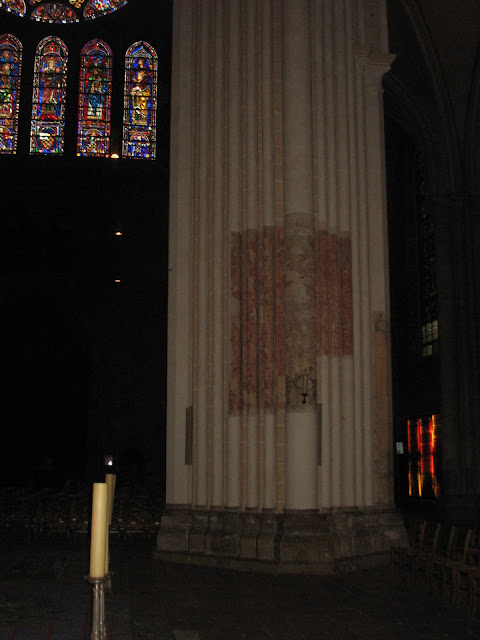We drove past this horse cart for a couple of weeks contemplating the purchase... was it too kitschy for the courtyard? And did we really want or need another project, and finally, how would we even get it home?
Once we were able to determine the price, which took lots of pantomime along with our limited language skills, the decision was clear. The horse cart would be fabulous in the courtyard! Now the dilemma would be how do we move the cart the 2 km to Montegut.
Enter ex-pat friend and neighbor Ray Brown and his utility trailer. He and Barry worked through several options, and with only one trip, they successfully delivered the cart undamaged.
The next task was to stabilize all the parts and pieces. The shackle that connects the spring to the cart's body was straightened, and it looked (almost) as good as new!
Thorough cleaning and lots of reconstruction, all the wood received the anti-bore beetle spray and then a coat of waterproofing sealer.
Jeremie helped move and assemble the cart inside the stone circle. He is always ready and eager to work. I wish we could clone him!
Our horse cart is in place and only needed just a little touch-up stain to highlight the details. We were able to find a few useful pieces from an old cart used in Montegut as early as the late 1880s. The wooden seat, side lanterns, and buggy shafts had been stored in the barn. It was serendipitous to see them in use again.
Now it really shines! What do you think?
I had been propagating flower seeds in anticipation of filling the garden with color for the summer. Luckily there was plenty for the garden and the cart.
Now the fun begins. Planting is my favorite part. Geraniums, Green and Purple Potato vines, Cosmos, Morning Glory, Vinca, Cone Flower, Nasturtium, Lobelia, and Alyssum plus a few Zinnias and Snap Dragons, here and there.
We are thrilled with the results. The cart filled with flowers is another way to welcome family and friends to Montegut.
Pots and trays filled with a wide variety of flowers in place, and now with just the right amount of sun and water, that old cart has a new life filled with color.
We can't wait to fill the cart with color again next spring.
And if you have, thanks for reading.
Au Revoir, Linda


















































